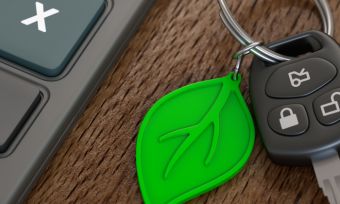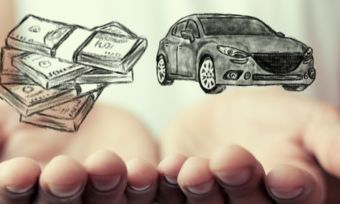As the popularity of SUVs continues to rise, more and more Kiwis are facing the decision between 4WD and AWD vehicles. But it’s important to note that while fundamentally the same thing (the engine is turning all four wheels) these vehicles aren’t actually the same, and their uses are very different. Canstar explains.
What is the difference between 4WD and AWD?
Unlike a 2WD, where power is sent to just the front or rear wheels (while the other two turn thanks to the momentum), a 4WD or AWD vehicle uses the engine to power all four wheels. So in this sense, 4WD and AWD vehicles are the same.
But, aside from that, things are markedly different, and more complicated.
To start simply, in general terms, AWD vehicles are typically designed for on-road use, with the all-wheel drive component being marketed primarily as a safety feature. Whereas 4WD vehicles tend to be bigger, more robust vehicles that are designed to go off-road.
So while both are turning all the wheels, the purpose for doing so, and even the mechanics involved, are different.
FWD vs RWD
One thing to be mindful of when browsing vehicles, is the acronym ‘FWD’ stands for front-wheel drive, not four-wheel drive. It can be easy to confuse the two, but this describes whether the power from the engine is being delivered to the front axle (FWD) or rear axle (RWD).
Either way, the vehicle is still 2WD.
AWD vehicles explained
Most AWD vehicles have all-wheel drive permanently engaged and do not allow you to switch the feature on and off. The main purpose is the added traction and safety provided by engaging all four wheels. This means that in unexpected situations, such as a slippery corner or when driving on icy roads, the added traction provides better control, and a safer driving experience.
While this added traction can help in some minor off-road situations, and your vehicle will probably do a better job driving on the beach than a typical 2WD, all-wheel drive is not designed for off-road purposes. As a result, AWD vehicles are typically modern and comfortable SUVs, and don’t resemble the tough and practical look of an off-road 4WD.
On-demand AWD
In this type of vehicle, all-wheel drive is only engaged in situations where needed. The vehicle uses two-wheel drive (typically the front wheels) and can cleverly detect when traction is lost and the front wheels begin to spin. At this moment, it automatically redirects engine torque to the other axle to ensure maximum grip.
This can provide the safety benefits of an AWD, without constantly having the feature engaged. One key benefit of this could be better fuel economy, as AWD systems can use more fuel.
→Related article: Top Selling SUVs in New Zealand
4WD vehicles explained
There are two main types of 4WD vehicles: part-time 4WD and full-time 4WD.
Part-time 4WD
A part-time 4WD is the original 4WD. Essentially it is a 2WD vehicle that has the option to switch to a 4WD for off-road situations. Because it is designed for going off-road, the design of these vehicles typically differs from AWD. They are typically larger and more robust SUVs or utes with a higher clearance to avoid hitting debris.
Why not just use 4WD all the time?
This is where the key difference between AWD vehicles and 4WD vehicles lies. When driving on-road, wheels need to spin independently to drive around corners, as the required rotation of the wheels is different. In AWD vehicles, a drive system with a mechanism controls the torque of the wheels while still allowing rotational difference between front and rear axles.
Essentially, an AWD can spin all the wheels, but at independent speeds.
But with a part-time 4WD, when four-wheel drive is engaged the two cogs that turn the axles are linked by a chain. In doing so, it locks the speed of the front and rear axles. That is, the front and rear axles rotate at the same rate.
This is fine in slow-going off-road situations, as the loose terrain allows the wheels to slip and spin, correcting any over-winding. But on paved roads, with more traction, the wheels will be unable to do this and the wheels will maintain (or at least attempt to maintain) the same rotational speeds.
This can cause ‘wind-up’ and seriously damage your vehicle.
Full time 4WD
A full-time 4WD is a newer version of 4WD, and a lot more like an AWD vehicle.
Like on an AWD, all four wheels are engaged at all times but the front and rear axles are able to operate at different rotational speeds. This is thanks to a centre differential (or simply diff) allowing for safe on-road driving. In this mode, and used in this way, a full-time 4WD is operating more or less the same as an AWD.
However, unlike an AWD, this diff can be locked, forcing all the wheels to rotate at the same rate, as they do on a part-time 4WD, providing the same off-road abilities.
→Related article: Top Selling Utes in New Zealand
How does car insurance work for a 4WD?
Car insurance for a 4WD is no different to regular car insurance. So you can cover your 4×4 ute without issue. However, if you actually use your off-road vehicle off-road, it can be a little more complex. Just because your car can plough through rivers and traverse sand dunes, doesn’t mean your insurer will be happy about it.
For starters, some insurers won’t cover you. No matter if your vehicle is designed for it, some policies will specifically mention there is no cover for off-road driving. Other providers will offer limited cover. They don’t include or exclude off-road driving, but, as part of your insurance policy provide cover for genuine loss. So if you took all possible precautions, and there was really nothing you could do about what happened, your insurer may cover you.
However, don’t simply make that assumption. Talk to your insurer, and let them know you plan to head off-road. It may be a matter of assessing it on a case by case basis, and you may need to take out some extra specialist cover.
Otherwise, there are a handful of off-road specific insurers, such as Rothbury, who cater to the off-road market.
Are SUVs AWD or 4WD?
Originally, SUVs were 4WD vehicles designed to go off-road. But, as the market has shifted, and SUVs have become the choice for everyday consumers, this has changed. You can now get plenty of 2WD and AWD SUVs that are designed for everyday city use. And for those who want the best of both worlds, there are still some larger 4WD SUV models that still provide the ability to take it truly off-road. Though these tend to be less popular.
It’s important you never assume your SUV is off-road ready. The modern SUV market barely resembles what it once was, and smaller city-centric 2WD options are much more common. Plus, as we mentioned above, AWD SUVs may be (technically) four-wheel drive, but they aren’t really designed for much much more than a weekend trip to the bach.
Which should I buy?
This depends on your needs. For most casual driving, a 2WD vehicle is perfectly fine. If you want some extra safety, or take regular trips to the countryside where there are some gravel or dirt roads, or you have a beachside bach that often sees sand spilling onto the street, an AWD may provide some added safety. Plus, a little bit of added off-road grunt.
If you intend to do any more than this, a 4WD vehicle will be needed.
Cost
One thing to note is that 2WD vehicles are typically the cheapest, and options to upgrade to all-wheel/four-wheel drive can come at significantly higher costs.
For example, the hugely popular BEV Hyundai Ioniq 5 starts at $79,990. However, upgrading to AWD will add an eye-watering $16,000 to the price tag of the base model!
The added complexity of these vehicles can also lead to higher insurance costs, and/or repair costs should something go wrong.
Does a 4WD/AWD cost more to run?
Fuel costs are a big concern right now. And, understandably so. If you’re looking at a new vehicle, you want to consider the fuel economy.
In general, AWD and 4WD vehicles use more gas. For starters, they tend to be bigger, heavier vehicles, which require more gas in the first place. But the added weight and resistance of the mechanics needed for all-wheel and four-wheel drive can further impact fuel economy.
That’s not to say you can’t find an AWD with good fuel economy. It just may not be as good as a 2WD. However, fuel economy is improving, and you may find this is less of an issue. Not to mention hybrid and electric models that can further reduce your reliance on petrol.
Related article: Save on Fuel: Five Ways to Beat Petrol Prices
What options do I have?
Below we’ve listed some of New Zealand’s most popular SUVs (comprised of top-selling models from both 2021 and 2022), along with the drivetrain options you have to choose from.
Do note, that multiple drivetrain options may be listed for some models, as one model can have several iterations, all with different features, and 2WD vehicles include both front-wheel drive and rear-wheel drive options.
| Top Selling SUVs 2021 | Drivetrain Options |
| Mitsubishi Outlander | 2WD/4WD |
| Toyota Rav4 | 2WD/AWD |
| Mitsubishi ASX | 2WD |
| Mazda CX-5 | 2WD/AWD |
| MG ZS | 2WD |
| Kia Stonic | 2WD |
| Nissan X-Trail | 2WD/4WD |
| Hyundai Kona | 2WD/AWD |
| Kia Seltos | 2WD |
| Kia Sportage | 2WD/AWD |
| Nissan Qashqai | 2WD |
| Mitsubishi Eclipse Cross | 2WD/AWD |
| Other Popular SUVs | Drivetrain Options |
| Hyundai Ioniq 5 | 2WD/AWD |
| Haval Jolion | 2WD |
| Ford Everest | 4WD |
| Hyundai Tucson | 2WD/AWD |
| Toyota Highlander | AWD |
Compare car loans with Canstar
If you are looking a getting yourself a new set of wheels but don’t have all the cash needed, you’re not alone: 80% of car buyers purchase their cars on finance. Shopping around for a new car is no doubt more thrilling than picking a personal loan. But there can be some serious savings available, just by comparing the personal loan market. And that’s where Canstar can help!
The table below displays some of the unsecured personal loan products available on Canstar’s database for a three-year loan of $10,000 in Auckland (some may have links to lenders’ websites). The products are sorted by Star Rating (highest to lowest) followed by company name (alphabetical). Use Canstar’s personal loan comparison selector to view a wider range of products on Canstar’s database. Canstar may earn a fee for referrals.
Compare car loans with Canstar

About the author of this page
This report was written by Canstar Content Producer, Andrew Broadley. Andrew is an experienced writer with a wide range of industry experience. Starting out, he cut his teeth working as a writer for print and online magazines, and he has worked in both journalism and editorial roles. His content has covered lifestyle and culture, marketing and, more recently, finance for Canstar.
Enjoy reading this article?
You can like us on Facebook and get social, or sign up to receive more news like this straight to your inbox.
By subscribing you agree to the Canstar Privacy Policy




Share this article